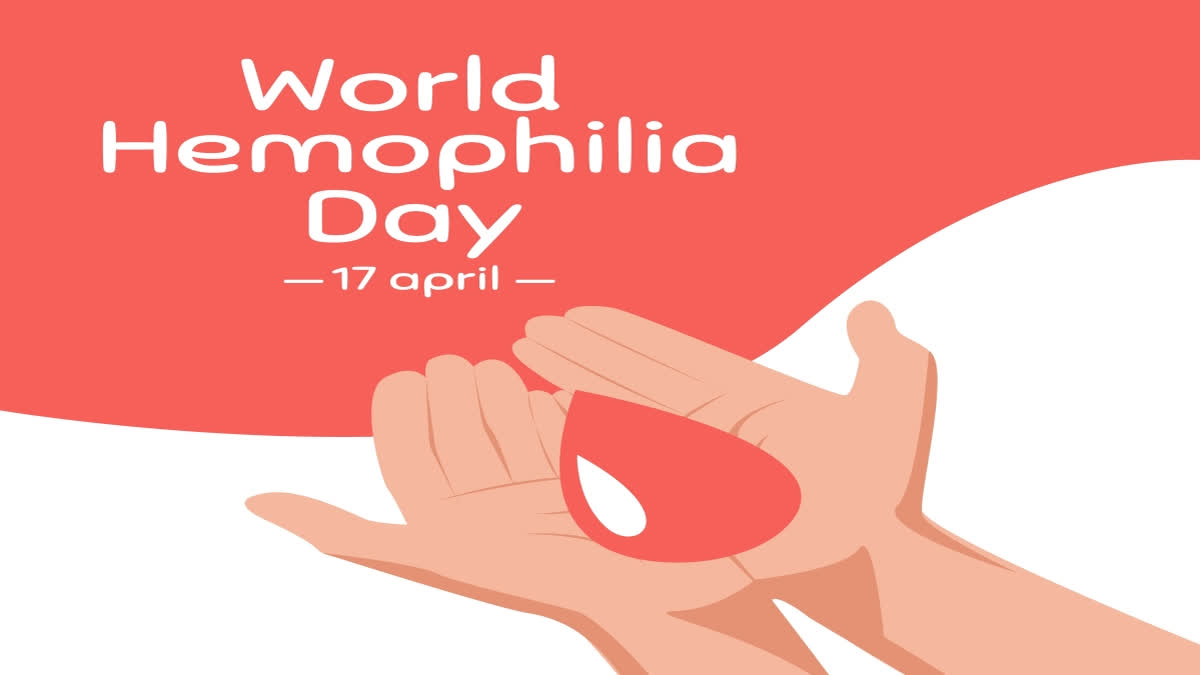Hyderabad: World Hemophilia Day is observed globally on April 17th each year to raise awareness about hemophilia and other bleeding disorders.
Hemophilia is a rare genetic disorder that affects the blood's ability to clot properly, leading to prolonged bleeding and easy bruising. This day is an opportunity to educate the public about hemophilia, improve access to treatment and care for those affected, and support research efforts to find better treatments and eventually a cure for this condition.
Hemophilia and other bleeding disorders are statistically more rare than other chronic diseases (only 1 in 10,000 suffer from hemophilia), these disorders often get overlooked when it comes to funding and exposure. That is why this year’s theme for World Hemophilia Day is “Access for All: Partnership, Policy, Progress. Engaging your government, integrating bleeding disorders into national policy.”
Symptoms
Signs and symptoms of hemophilia vary, depending on your level of clotting factors. If your clotting factor level is mildly reduced, you might bleed only after surgery or trauma. If your deficiency is severe, you can bleed easily for seemingly no reason.
Signs and symptoms of spontaneous bleeding include:
- Unexplained and excessive bleeding from cuts or injuries, or after surgery or dental work
- Many large or deep bruises
- Unusual bleeding after vaccinations
- Pain, swelling or tightness in your joints
- Blood in your urine or stool
- Nosebleeds without a known cause
- In infants, unexplained irritability
Bleeding into the brain
A simple bump on the head can cause bleeding into the brain for some people who have severe hemophilia. This rarely happens, but it's one of the most serious complications that can occur. Signs and symptoms include:
- Painful, prolonged headache
- Repeated vomiting
- Sleepiness or lethargy
- Double vision
- Sudden weakness or clumsiness
- Convulsions or seizures
Types of Hemophilia
The three forms of Hemophilia include Hemophilia A, B, and C.
Hemophilia A. Type A is the most common typeTrusted Source of Hemophilia. A deficiency in factor VIII causes this form of hemophilia, which is also known as 'classic Hemophilia.'
Hemophilia B. This type of Hemophilia, is also known as Christmas disease because clotting factor IX is missing or severely deficient.
Hemophilia C. Hemophilia C, also known as “factor XI deficiency,“ is a rare form of hemophilia first discovered in 1953 in people with severe bleeding after dental extractions.
Hemophilia is an inherited genetic condition. This condition isn’t curable, but it can be treated to minimise symptoms and prevent future health complications.
Causes and Risk Factors Hemophilia
In most cases, hemophilia is inherited, resulting from changes to certain genes that control clotting factor production. The genes responsible and the clotting factors they’re associated with determine the type of hemophilia. In rare cases, hemophilia is acquired, meaning people are not born with it.
In these cases, hemophilia results from damage to clotting factors by immune system proteins. This type of hemophilia can occur during or immediately after pregnancy or when you have an autoimmune disorder and grow older. Sometimes the cause of acquired hemophilia is not known.
Hemophilia is often inherited, meaning genetics play a strong role in who develops hemophilia. But in some cases, hemophilia is acquired. In most cases, a mutation in the genes responsible for making clotting factors causes hemophilia.
Treatment for Hemophilia
Though no cure exists for hemophilia, doctors can successfully treat the condition. With mild or moderate inherited hemophilia, you may only need treatment in special situations, such as before surgery or labour. More severe inherited hemophilia often requires ongoing treatment.
Treatment focuses on replacing the missing protein and preventing complications. It involves giving or replacing the clotting factors that are too low or missing. Scientists can derive clotting factor treatments for replacement therapy from human blood or synthetically produce a form in a laboratory.
Synthetically produced factors are called recombinant clotting factors. Medications called factor replacements provide the missing clotting factor and promote clotting. Non-factor replacements work to prevent or stop bleeding. The Food and Drug Administration has approved a gene therapy for hemophilia B, with additional clinical trials underway for both hemophilia A and B. Gene therapy can potentially remove the need for frequent treatment. For acquired hemophilia, doctors typically prescribe therapy that suppresses or holds back, the immune system.
There are two main forms of replacement therapy:
Prophylactic therapy: Some patients will need regular replacement therapy in order to prevent bleeding. This is called prophylactic therapy. Doctors typically recommend regular treatment for people with severe forms of Hemophilia A.
Demand therapy: This will stop the bleeding on demand. People living with mild hemophilia may only need demand therapy, which is a treatment that doctors provide only after bleeding begins and remains uncontrollable.
Haemophilia in India
The Haemophilia and Health Collective of North (HHCN), a registered body of healthcare professionals working in the domain of haemophilia care, launched a proposed guideline for the treatment of Persons with Haemophilia (PwH). Claiming to be the first set of local directives for haemophilia treatment, the guidelines have been released in collaboration with National Health Mission (NHM) representatives from 16 states.
According to HHCN data India has the second-largest population of haemophilia patients in the world, with an estimated 136,000 patients grappling with Haemophilia A. Nearly 80 per cent of haemophilia cases are currently undiagnosed in India as several hospitals and medical institutions lack screening capabilities for blood clotting.
India became one of the only countries in the world to classify haemophilia patients as disabled, by adding persons with haemophilia, thalassemia, and sickle cell anaemia in the Rights of Persons with Disability Act in 2016. According to HHCN data, a person with Haemophilia A, on average, experiences 30-35 bleeds a year, with each bleed reducing at least 15 days of life and possible complications leading to early mortality or morbidity.


